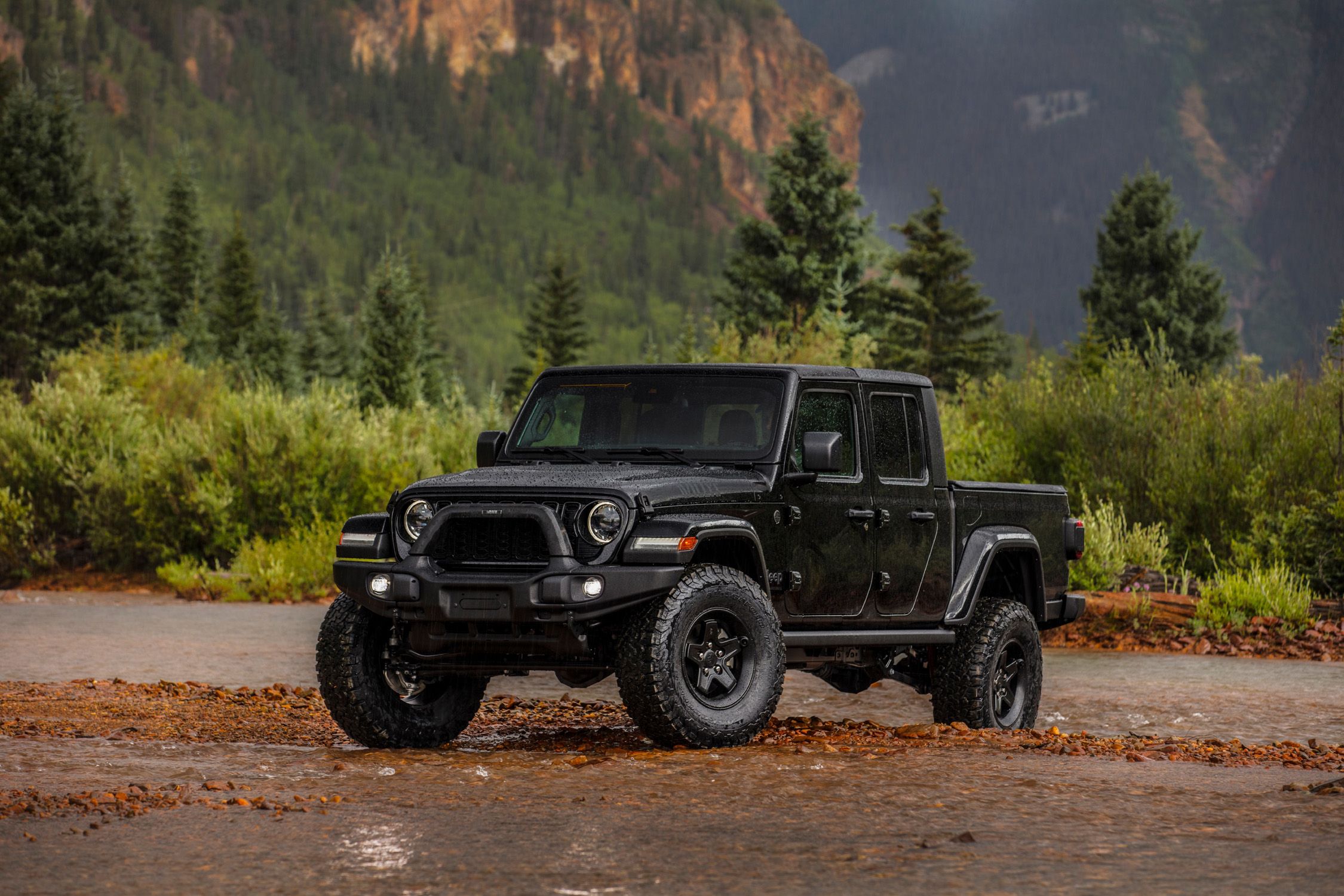
This year, the coliseum is re-opening its doors. That’s right: gladiators are making a comeback.
On November 22, director Ridley Scott is serving up Gladiator 2, the long-awaited follow-up to 2000’s Best Picture winner Gladiator. Starring Paul Mescal and Pedro Pascal, we’ll see if the historical epic resonates with audiences the same way its hit predecessor did nearly a quarter century ago. But in the meantime, Jeep is releasing the year’s most anticipated Gladiator sequel: the new and improved 2024 Jeep Gladiator.
Putting on a Show
There’s a surplus of off-road-centric, mid-size trucks on the market, but the Jeep Gladiator has developed a reputation based on its uniqueness. Its singular four-wheel drive system and suspension are designed to thrive on off-road conditions. It’s one of the only pickups to offer a six-speed manual transmission. To top it off, the Gladiator boasts a 7,700-pound tow rating and 1,725-pound payload, despite sticking with its modest but reliable 285-hp, 3.6-liter V-6 engine.
Think of the new Gladiator as its seven-slot sibling, the Jeep Wrangler, with a pickup truck bed dropped on top of it. Much like the recently refurbished Wrangler, the Gladiator has undergone cosmetic changes to its exterior, emerging with a fuller, rounder grille. New wheel designs and a windshield-integrated antenna complete the Gladiator’s sleek new look.
Are You Not Entertained?
The versatile 2024 Gladiator features a removable roof, removable doors, and a fold-down windshield. For the first time, it comes loaded with a 12.3-inch infotainment screen, offered standard even with the base Sport trim. You also have the option to move up to the Rubicon and Mojave trims – and that’s where things start getting really fun.
The Rubicon trim has been tried and tested with the Wrangler, and it remains the preferred choice for rock-crawling and uneven off-road trails. The desert-themed Mojave, however, is newly exclusive to the Gladiator. An homage to the sand-strewn surfaces Roman combatants once risked life and limb on, the Mojave can easily traverse bumpy dunes, absorbing each would-be blow before casually moving on to the next challenge. Much like the year’s other big blockbuster, Dune Part 2, the Gladiator Mojave proves it has desert power to spare.
With an Off-Road+ mode, 12-way adjustable seats, and improved safety features, the Gladiator Mojave guarantees the most comfortable, well-rounded off-road experience you can find. Its Fox suspension is equipped to combat a wide variety of rough terrain. Oh, and if you needed one more selling point on the Mojave: can we interest you in orange tow hooks?
Age of Legends
The age of gladiatorial combat is (thankfully) behind us, visitable only at one of Reading’s local multiplexes. However, the age of the Jeep Gladiator is alive and thriving. Here at Savage 61, you can check out our full roster of new and certified pre-owned Jeep vehicles, from off-road warriors like the Gladiator and Wrangler to heavy-hitting SUVs like the 2024 Compass and 2024 Jeep Grand Cherokee. Much like the combatants of old, each Jeep we sell is battle-tested and ready to take on whatever challenges life puts in front of you.
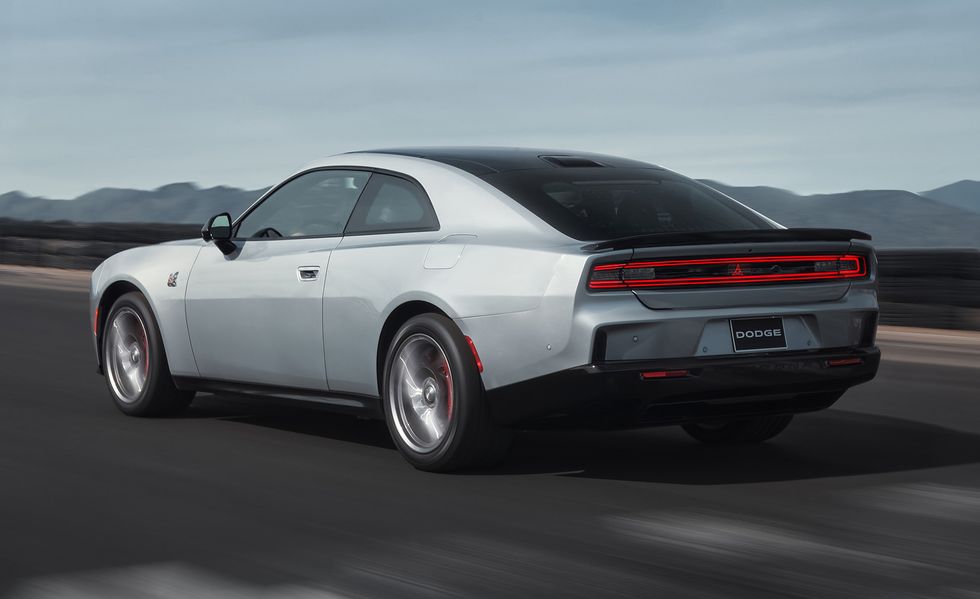
When we think of a vehicle having versatility, we normally mean that it performs exceptionally on a multitude of terrains, or it offers flexible storage options. It rarely means the vehicle offers different engines, door configurations, and both electric and gas-powered architectures. But that’s exactly what Stellantis is proposing with its overhauled Dodge Charger line.
The eighth-generation Charger was revealed this week, having traded out its old Hemi V-8’s and superchargers for electric motors and all-wheel drive performance. But the muscle car legend’s ambitions stretch beyond that, with plans to introduce a gas powertrain, four-door option, and more to the Charger in 2025. In other words, don’t call the muscle car dead; call it evolved.
Muscle Memory
The past year has been the Charger’s transitional era. When the seventh generation ended in 2023, taking the Hemi V-8 with it, we weren’t certain what the future held for the Charger. Thankfully, we didn’t have to wait long to see what the next wave would look like, as three next-generation Chargers are primed to be released over the next two years. Let’s explore all three, starting with the Charger named the Daytona – the moniker all electric powertrain Chargers will use moving forward.
Dodge Charger Daytona (Late 2024)
The first of the revamped Chargers is an EV that is expected to become available later in 2024. The Daytona was first revealed back in the summer of 2022 as a concept. To our pleasant surprise, the production model is extremely faithful to the concept we were shown over 18 months ago. Now, the first-ever EV muscle car is ready to do work.
The Charger Daytona will come in both R/T and Scat Pack trims. Both trims feature a 400-volt architecture and a battery with 93.9 kWh of capacity. With an electric motor on both the front and rear axles, the Charger Daytona will debut with standard all-wheel drive. The coupe-like two-door Daytona will be the first available, with four-door alternatives to follow next year.
Dodge Charger Banshee (2025)
The Banshee is a high-performance variant of the Daytona, set to arrive in 2025. If you were wondering what happened to some of the more intriguing equipment from the Daytona concept, Stellantis was saving it for their top-spec performance model. Upping the 400-volt Daytona, the Dodge Charger Banshee will feature 800-volt architecture and two-speed transmission.
In many ways, the Banshee is the resurrected, electrified version of the Hellcat. Now that the Hellcat has been retired along with its Hemi V-8, the Banshee can showcase what a high-performance, electric muscle car is capable of. The Daytona may be the first-ever EV muscle car, but the Banshee will take it to new heights.
Dodge Charger Sixpack (2025)
The eighth-generation Charger is exclusively electric in its inaugural year, but it won’t remain that way for long. Dodge is set to reintroduce its gas powertrains to the new Charger lineup in 2025, starting with the Charger Sixpack. This time around, they’ll be powered by Hurricane twin-turbocharged 3.0-liter inline-six engines. Already used with Jeep vehicles such as the Wagoneer, the two engines produce either 420 or 550 horsepower. The Sixpack will be available with both two and four doors.
Ready, Set, Charge!
Here at Savage 61, we’re eagerly anticipating the arrival of the new-look Charger and its eventual fleet of variants. In the meantime, there’s always something new to discover on our lot. If you’re unsure about going fully electric with the Charger Daytona, why not test the waters with the 2024 Chrysler Pacifica Plug-In Hybrid? Or hit the road this spring in the new Ram 1500.
While there’s always a chance the Charger might be biting off more than it can chew, we can’t fault it for attempting too much. When it comes to ambition, we’re cut from the same cloth here at Savage 61 – Pennsylvania’s most awarded dealership.
Five Engine Sounds You Shouldn’t Be Ignoring
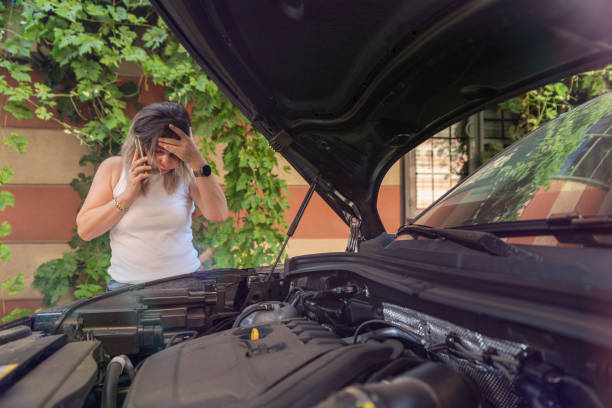
While there are certain exceptions – Optimus Prime, Christine, the characters in Pixar’s Cars, etc. – our vehicles don’t speak the English langue. But that’s not to say that your vehicle has no method of conversing with you. Instead, engine sounds are our cars’ primary modes of communication.
Distinguishing between ordinary car sounds and potential alarms can be a challenge, but it’s crucial not to ignore them. You wouldn’t ignore a human’s cry for help; your vehicle is doing much the same, trying to make you understand what ails it and the steps you can take to assist.
At Savage 61, we’re perpetually on the lookout for unusual engine sounds. Here’s a guide to a variety of noises your vehicle might generate – and importantly, what these sounds could indicate.
Squealing / Chirping
High-pitch squeals are more than just persistent annoyance to the driver – often, they’re a warning of a loose or worn-out belt. If you perceive the squeaking or chirping is originating from your engine, it might be your serpentine belt, which energizes your alternator, power steering pump, and water pump. Set a service appointment with our specialists promptly, as a damaged belt can cause overheating, loss of power steering – and a hefty repair bill.
But before you do, confirm that the squeaking isn’t coming from your brakes. Manufacturers intentionally insert a tiny fragment of metal in your brake pads, which emits a loud squeal to inform you that your brake pads are wearing thin. Monitoring the health of your brakes pads is crucial, but replacing them is much more common (and less costly) than substituting your serpentine belt.
Knocking / Tapping / Pinging
It’s not someone stuck under your car’s hood (hopefully). A thudding or ticking noise from the engine could be hinting at a problem with the engine bearings. These bearings support the engine’s rotating elements – and they’re not afraid to alert you when they’re failing.
Otherwise, it could be a matter related to substandard fuel quality or old spark plugs – both capable of causing further damage or engine failure. To guard against this, contact our Service Department immediately at the first sign of these aggressive noises.
Clunking / Rattling
Hearing something clunking in your engine is one of the most instantly alarming car sounds. It’s a sign that something – potentially crucial to your safety and protection – is disconnected or displaced. If you’ve checked under your hood and are uncertain about what might be off, let a professional examine it.
A low rattling or rumbling could be a more urgent alert, as it usually points to a failing catalytic converter. Unfortunately, the only resolution in this situation is to entirely replace the converter. Adhere to a regular maintenance schedule and hopefully you won’t get to this point.
Whooshing / Hissing
Typically, these sounds are the result of a leak in the exhaust system. If ignored, this leak can reduce both engine efficiency and fuel economy. A number of factors could cause the leak: holes in the muffler, catalytic converter, or exhaust manifold are all potential culprits. Fortunately, our Parts Department has everything you need to restore harmony to your vehicle and have it operating smoothly once again.
A prolonged hissing could also be because of coolant leakage or the vehicle’s cooling system overheating. If you believe your vehicle is overheating, pull over and find a place to park immediately – for both your personal safety and the health of your engine.
Transmission Grinding
Persistent grinding noises usually stem from transmission problems and are most noticeable when changing or adjusting gears. (Automatic transmissions generate jerking and vibrating rather than a grinding noise.) Look for other signs of a faulty transmission, like leaking fluid, a burning scent, or a power shortage. Seek advice from an experienced or certified expert soon to prevent hefty transmission repair costs.
Relish the Sound of Silence
The most comforting sound your vehicle can make is no sound at all. A silent engine is a signal of a functional engine, and at Savage 61, we’re more than happy to treat your vehicle to some needed tranquility. Confide in our team of professional technicians for battery checks, oil changes, and any other service needed.
When unusual sounds persist, it may be time for a new vehicle. Bring your old ride to Savage 61 and trade it in for a new or certified pre-owned vehicle. From the Chrysler Pacifica to the Dodge Hornet, Pennsylvania’s number one dealership is loaded with vehicles that hum soothingly and handle like a charm.
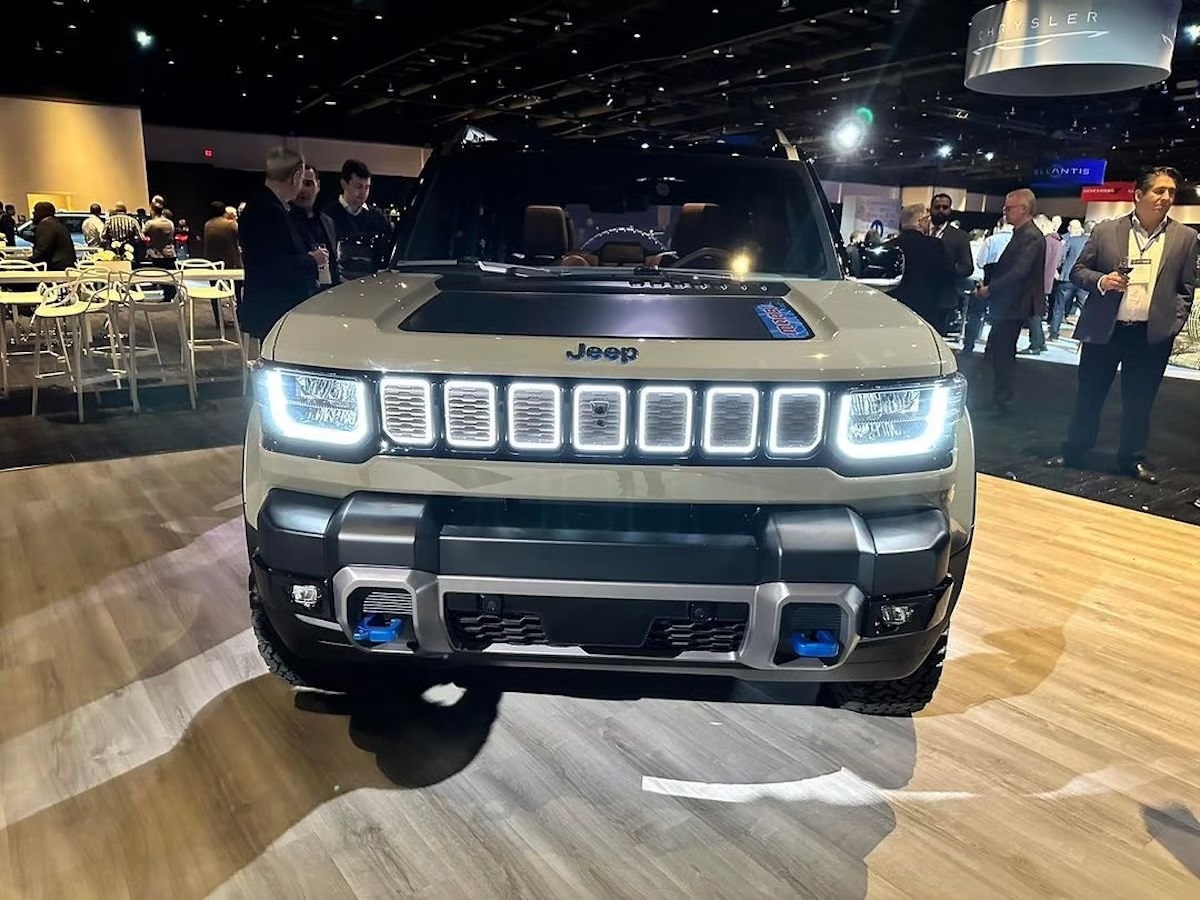
The Jeep Recon and Wagoneer S aren’t Jeep’s first forays into the alternate energy space. The brand has been offering plug-in hybrid versions of its most popular models for years, and the Jeep Wrangler 4xe is the best-selling plug-in hybrid in both North America and Europe. But the Recon and Wagoneer S represent Jeep’s first all-electric endeavors, and their arrival is quickly approaching.
At Savage 61, we anticipate the new Recon and Wagoneer S EVs to start arriving at dealerships some time in 2024. As excitement grows, here’s everything we currently know about both new EVs.
Charge Me Mama, Like a Wagoneer
Following Stellantis’s surprising update on eight new electric vehicles last week, leaked images of the upcoming Wagoneer S EV surfaced online. We already knew the Wagoneer S would be exclusively available in all-electric form, but now we have a few additional details on the premium, midsize SUV.
The electric Wagoneer will be roughly as large as the current two-row Grand Cherokee, and includes a state-of-the-art, LED-lit grille. Jeep insists the “S” in Wagoneer S stands for speed, as demonstrated by its ability to jump from zero to 60 in under four seconds. Around 400 miles of EPA-estimated range is expected, along with up to 600 horsepower.
Early images of the Wagoneer’s interior reveal a typically luxurious and spacious cabin. Multicolored ambient lighting creates a soothing atmosphere during your trip. The dashboard has a total of four(!) screens, including dual central touchscreens and a passenger-facing touchscreen. The Wagoneer S also boasts a 19-speaker McIntosh audio system. It’s everything you’ve come to expect from an SUV made by Jeep… minus the gas tank.
Off-Road Adventuring Redefined
Of the two EVs, the Recon better fits the “traditional” Jeep image. The Recon is modeled after the Wrangler 4xe plug-in hybrid (the Recon name having been previously used for a Wrangler variant). While the Wagoneer S EV is positioning itself as the preferred option for the everyday man or woman, the boxy Recon is preparing to demonstrate what an EV can do off-road.
While certain key specs such as range have yet to be disclosed, we do know a bit of what to expect from the Recon. It includes removable doors and a power-folding rooftop, inviting nature to join in on all your electric adventuring. Jeep’s Selec-Terrain traction management system is also included, as are off-road tires, e-locker axle technology, and under-body protection.
Send Gas to the Past
Jeep’s stated goal is to become the global leader in electrified SUVs. By 2030, Stellantis expects the entirety of Jeep’s North American and European sales to come from EVs. Although they still months away from their U.S. debuts, it already appears that the Recon and Wagoneer S EVs are the first steps of a much larger plan.
You can follow in Jeep’s green footsteps by making the switch to electric. As we await Jeep’s newest EV offerings, explore the electrified versions of Jeep classics, including the Wrangler 4xe and Grand Cherokee 4xe hybrids. Also consider plug-in hybrids from Jeep’s corporate siblings, such as the 2024 Chrysler Pacifica or 2024 Dodge Hornet R/T.
Here at Savage 61, we’re revved up for everything 2024 is set to offer. See for yourself how a new or pre-owned Jeep could reshape your year when you stop by Pennsylvania’s most awarded dealership, Savage 61.
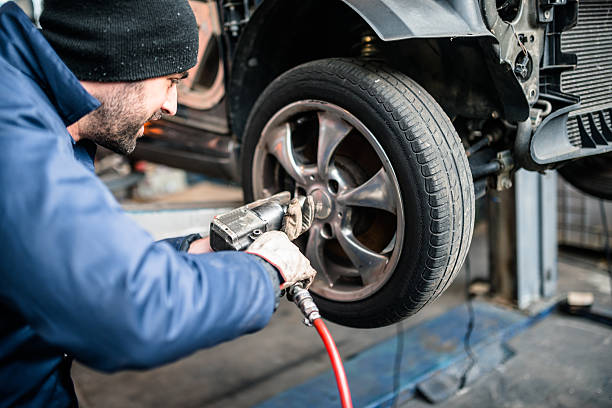
Let’s be real for a moment: the last time a dealer recommended a tire rotation, did you think you were being hustled? That’s understandable! The majority of dealerships and manufacturers do a poor job of explaining what tire rotation and balancing involves, leaving drivers to suspect it’s just another addition to your bill.
In reality, rotating and balancing your tires regularly is the most surefire way to increase your tires’ lifespan. Courtesy of the engineering experts here at Savage 61, here’s why you should make tire rotations a regular part of your maintenance routine.
What Exactly Is Tire Rotation?
Tire rotation is actually quite a simple process. It involves moving your tires from one area of your car to another. Typical tire rotation follows the same pattern: with front-wheel-drive cars, front tires typically get shifted straight back, while the rear tires are moved to opposite sides on the front. The opposite applies for rear-wheel-drive and all-wheel-drive vehicles, in which the rear tires are moved straight forward, while the front wheels are moved to opposite sides of the rear.
You don’t need to rotate your tires excessively – the recommended interval is 5,000 to 8,000 miles – but requesting a tire rotation whenever you get your oil changed (or at least every other time) is a safe habit to get into. If you notice a decrease in tire pressure or abnormal vibrations when steering, these could be signals that your tires are ready to relocate.
Okay, I Know What Tire Rotation Is. But Why Is It Important?
So just why is it so important for your vehicle to play musical tires like this? Tire rotation prevents uneven tire wear caused by the front of your car being heavier than the rear. By balancing the tread on your tires, you can enjoy a smoother ride without any vibrations. Additionally, this provides better traction on slippery or narrow roads, improving your overall safety while driving.
On the other hand, an uneven tread on your tires can lead to faster wear and deflation, which in turn reduces fuel efficiency. That’s why tire rotation is vital not only for preserving the health of your tires, but also for the well-being of your engine. If the air pressure in your tires is consistently measuring low, it may be time to schedule a service appointment with us.
So Then… What’s Tire Balancing?
When balancing, mechanics use a machine to confirm that the weight of the tire and wheel are balanced. If imbalanced, they attach small lead weights to the rim of the wheel until a perfect equilibrium is reached.
Keeping your tires balanced goes hand in hand with regular rotations, as both procedures adhere to the same suggested timelines. If you choose to rotate and balance your tires during each oil change, many garages will provide them as a complimentary service.
Find Your Perfect Balance Today
Here at Savage 61, our enormous inventory is filled with a ride range of new and pre-owned vehicles, from the sleek and steady Dodge Charger to the 2024 Jeep Grand Cherokee L. With the help of Pennsylvania’s most awarded dealership, you’ll drive off our lot having discovered the perfect balance you were seeking.
Five Facts About Jeep You May Not Have Known
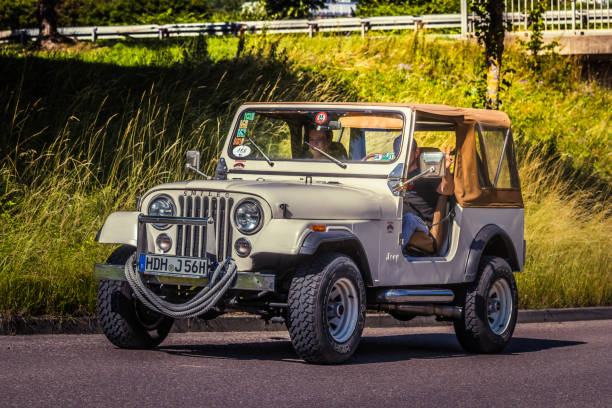
Driving a Jeep is an adventure that extends well beyond the asphalt. Once you become a proud Jeep owner, you join a tight-knit community of off-road enthusiasts. Forget about Taylor Swift and her “Swifties” – the Jeep Club is the ultimate group to be a part of in 2024.
Every year, almost a million brand-new Jeeps are sold, proving the enduring popularity of the brand. Yet, even after 80 long years, there are still some aspects of the Jeep brand’s history that remain enigmatic. At Savage 61, we shed some light on the unknown with five obscure Jeep facts.
The Origins of Its Name Are Unclear
It’s pretty straightforward to figure out how Ford, the brainchild of Henry Ford himself, got its name. Likewise, Buick, Chevrolet, and other auto brand names derived from their founders.
However, the origins of “Jeep” remain somewhat elusive. The prevailing theory suggests that it was derived from the phonetic pronunciation of “GP,” which stood for “General Purpose.” This designation was given to World War II vehicles that had no specific use. It’s quite plausible that soldiers started referring to these vehicles in such a way, and the term caught on from there.
But then, it’s just as possible that Jeep is named after a 1930’s Popeye comic strip character. Eugene the Jeep was Popeye’s magical pet who could go anywhere and do anything; perhaps soldiers associated the same freedom of movement with their off-road, all-terrain general purpose vehicles? Regardless of how Jeep first became Jeep, the name has since become synonymous with automotive freedom. It also isn’t going anywhere.
They Were Used as Train Cars in WWII
Jeep was established in 1941, just as America was gearing up to enter World War II. As mentioned before, Jeeps were classified as “General Purpose” vehicles during the war. But was the Jeep given this label because it was a generic vehicle without a defined purpose or identity? Or because it was a versatile vehicle capable of performing a wide range of tasks? The military clearly thought the latter, as Jeeps ranked amongst their most widely used vehicles throughout the war. In fact, Jeep’s contribution was so commendable that they were awarded a Purple Heart for their role.
A notable advantage of Jeeps was their ability to travel on railroad tracks, allowing the formation of “Jeep trains.” These converted railways enabled the transportation of up to 10 tons, ensuring smooth supply lines. The Jeeps’ versatility in seamlessly transitioning between railway and conventional wheels made them an indispensable asset to the war effort.
The Seven-Slot Grille Once Had 13 Slots
Jeep is widely recognized for its iconic seven-slot grille that has become synonymous with the brand. However, the process of determining the optimal number of slots was not an easy one for the engineers.
Initially, the 1940 Jeep sported a grille with 13 slots – perhaps a tribute to the original number of United States colonies. Nevertheless, the designers soon started reducing the number of slots to achieve a more streamlined design. By 1943, the Jeep grille featured only nine slots, ultimately evolving into the now-legendary seven-slot grille that we know today. This iconic design element was solidified by the end of World War II in 1945.
The Color of Jeep is Trash
That’s not a knock – it’s just very literal! The Anvil Jeep color took direct inspiration from a trash can in the Jeep design studio. It became such a hit that it was eventually used for the Jeep Wrangler JK. Take this as inspiration for your own work the next time someone “trashes” it.
It’s More Than a Vehicle Brand – It’s a Family Sport
In 1953, a man named Mark A. Smith organized the first Jeep trek across the Rubicon Trail. This became a tradition, eventually dubbed Jeep Jamborees. Fast-forward to today, where the spiritual successor to these Jamborees exists in the form of Jeeping, a modern term that involves using Jeeps for off-road sport.
Exploring the great outdoors through Jeeping is an adventurous activity that the whole family can enjoy. Navigating cliff sides, tackling steep inclines, and conquering off-road trails enables you to fully experience the impressive power and capability of your Jeep. Plus, it’s a fantastic opportunity for family photo ops.
Jump Into a Jeep Today
Now that you know more than you ever have about Jeep, there’s only one thing standing in your way of becoming an official expert: the keys to the ignition. Pay us a visit at Savage 61 today and we’ll help change that. With our huge selection of new and pre-owned Jeeps, from the highly capable Renegade to the 2024 Jeep Grand Cherokee, Pennsylvania’s most awarded dealership will get you on the road to your next great adventure.
The Chrysler 300 Reaches the End of the Line
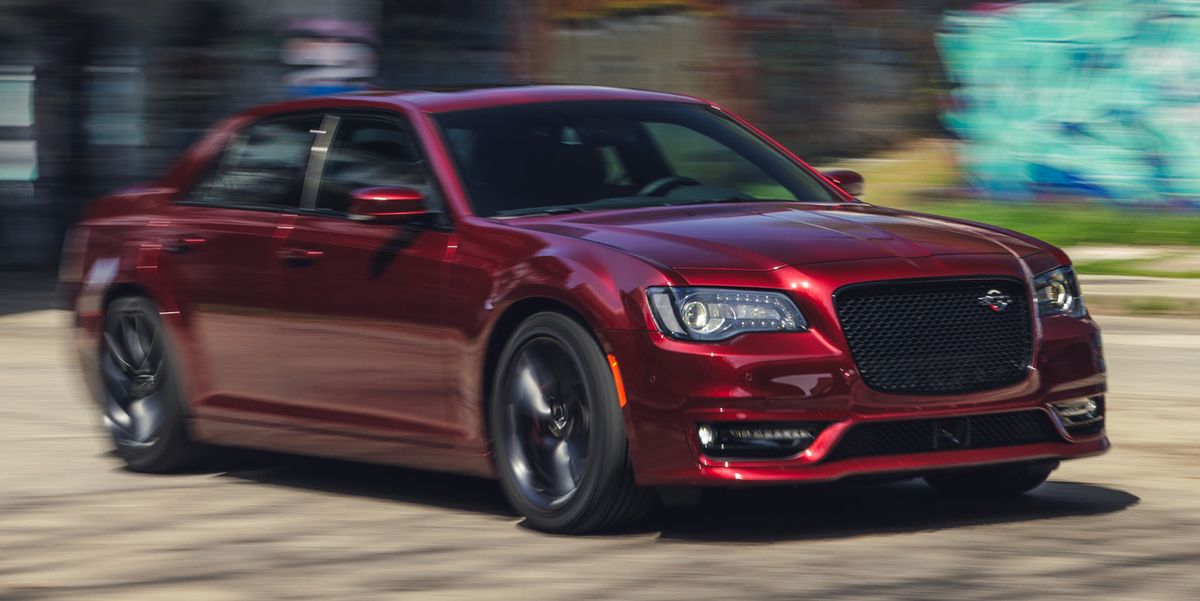
The Chrysler 300 series has rolled off the assembly line for the final time in its storied history.
Like its corporate siblings the Dodge Charger and Challenger, the Chrysler 300 is being discontinued after the 2023 model year. Moving forward, Chrysler and its parent company Stellantis made the decision to focus their efforts on their continued evolution towards total electrification.
Although the Charger and Challenger have the potential to return with new electric variants, every indication from Chrysler is that the 300 series may have indeed reached the end of its journey. Courtesy of Savage 61, here’s a look back at the history of the 300 series and why it’s ending now.
The History of the 300
Chrysler’s 300 line dates back to 1955, with the launch of the C-300 (which can retroactively be considered the 300A). In its first decade of existence, the 300 was known as the “letter series,” as each new model was followed by a letter. The 300B was updated into the 300C, which was redesigned into the 300D, and so forth.
That first generation of 300 vehicles was powered by a 5.4-liter Hemi engine with 300 horsepower, making it the most powerful American vehicle on the road at the time. The letter series concluded in 1965 with the 300L, which boasted 360 horsepower.
Another high-performance variant of the luxury 300, the Hurst 300, would follow five years later in 1970, though only 485 units were produced. The true rebirth of the 300 would come decades later.
In 1999, Chrysler launched the 300M, named after an abandoned 1966 redesign. The new 300M was a V6-equipped, full-size luxury car that would continue to be produced until 2004. Then in 2005, the 300 as we know it today fully arrived in the form of a four-door sedan. The first generation of this revamped 300 line lasted from 2005-2010, and the second generation that launched in 2011 leads us to the present day.
One Last Ride
The final special edition of the 300, the 300C, was released in 2022. Although production on the current-gen 300 officially suspends on December 31, 2023, the final 300C rolled off the line on December 8th at Chrysler’s Brampton Ontario Assembly Plant.
The last vehicle to come off the line was a Velvet Red 2023 Chrysler 300C with the iconic 6.4-liter Hemi engine. It’s a fitting final tribute to the strength and swagger of the 300C line, as the powertrain sported 485 horsepower and 475 pound-feet of torque. However, Chrysler and Stellantis have been moving away from eight-cylinder engines consistently over the past several years. Instead, they continue to march towards electric exclusivity and increased sustainability efforts.
“As we celebrate the last Hemi-powered 300C off the line with our Brampton team members,” said Chrysler CEO Chris Feuell, “we’re also excited to work together as Chrysler brand moves forward to a sustainable all-electric future as part of the Stellantis Dare Forward 2030 strategic plan.”
The Future is Electric
For those keeping track at home, Chrysler is now down to a sole remaining vehicle: the plug-in hybrid Pacifica minivan. However, when the successor to the 300 is eventually revealed, we fully expect that to be an electric vehicle as well. Clearly, the company is all-in on a green tomorrow.
You can become part of that electric future when you make the change to an EV today. Come in to Savage 61 today and see for yourself why you belong behind the wheel of a Pacifica. The 300 series may now be in the rearview, but with Savage 61, your future is full of possibilities.
New Year’s Resolutions for Car Owners to Consider

The New Year is upon us, a time to make life-altering resolutions and then immediately break them. But here’s a thought: what if 2024 is the year you stick to the changes?
The thing about New Year’s resolutions is that there’s no need for them to be major life upgrades. If you commit yourself to quit drinking or smoking and succeed, more power to you! But holding yourself to a series of small changes can wind up making a large impact.
For every car owner, there’s plenty of small adjustments that can be made when it comes to your driving habits, how you care for your car, and more. Here are five resolutions to consider in 2024:
Don’t Ignore the Service Light
The service light flashing in your car is inherently alarming, but obviously there’s a myriad of issues it could be indicating, some far more serious than others. It’s normal for people to ignore the problem until it becomes something more tangible.
But in 2024, try to address small problems before they grow into large, costly ones. Maintain regular service appointments with our experts here at Savage 61, and when your service light comes on, take it to the garage as soon as you can. In the long run, it will absolutely save you money.
Clean Your Car Regularly
Keeping your car aesthetically healthy is clearly a bit less important than monitoring what’s happening under the hood – but that doesn’t mean it’s unimportant. The interior of your car, especially, can wind up accumulating dirt and debris quickly, to the point where you wonder how you let it get to that point. When you suddenly need to give a passenger a ride, you could find yourself scrambling to do a full clean.
You should wash your car about every two weeks to keep the body clean, and every two months or so, consider running it through a more thorough wash or wax. And every time you get it washed, vacuum the inside to keep it more consistently clean.
Put Your Phone Down
More and more modern vehicles are embracing the fact that our phones have become an integral part of daily lives. Thanks to the rise of interconnected apps and infotainment screens, interacting with certain facets of your phone while driving is becoming more seamless and safer.
That said, if the only way to check your phone is still to pull it out of your pocket while you’re on the road… stop doing it in 2024. Pull over to the side of the road in an emergency, but otherwise remember it’s okay not to look at a screen for a half-hour. Cell phone usage still contributes to 1.6 million crashes each year, and one out of four accidents is caused by texting and driving. Even if double-tasking on the road hasn’t been an issue for you before, focus your attention on the road ahead and don’t needlessly endanger lives. Remember, all it takes is one incident to dramatically alter your life.
Know Your Lane
If you’re driving on the highway, you’re in the fast lane and someone is behind you, find a safe opportunity to change lanes and let them pass you. There’s always that one puzzling driver going 60 miles per hour in the left lane; you don’t want to be that driver. Think of it this way: you wouldn’t refuse to move your cart if you were blocking someone at the grocery store. In 2024, let’s all resolve to become more responsible drivers by expressing common courtesy and sticking to our lanes.
Consider Making the EV Switch this Year
This one constitutes more of a major life change, but if you have the resources, 2024 is the year to give serious thought to making the change to hybrid or electric. The impact it has on lowering carbon emissions is substantial, and we’re going to need every advantage we can get to combat climate change in the years ahead.
It helps that more and more dealerships are buying into the EV experience. And charging stations are starting to pop up everywhere. Here are some just a few nearby charging stations in the Reading area:
- ChargePoint Charging Station on 815 Lancaster Ave., Reading, PA 19607
- ChargePoint Charging Station on 1015 Lancaster Ave., Reading, PA 19607
- ChargePoint Charging Station on 210 George St., Reading, PA 19607
- Volta Charging Station in the Shillington Shopping Center, Reading, PA 19607
- Destination Charging Center on 701 Penn St., Reading, PA 19601
Cruise Into the New Year
No one is perfect when it comes to making and keeping resolutions. Hopefully, you take these changes of habit to heart, because they’re truly important to creating a safer, more orderly world. But even if you’re only able to implement one or two of these resolutions into your driving routine, you’re exhibiting a real and meaningful desire to change.
What never changes is the quality of vehicles you’ll find here at Savage 61. If you’ve got room on your resolution list, make it your prerogative to get to Savage today and explore what we have to offer.
5 Dodge Facts You Probably Didn’t Know
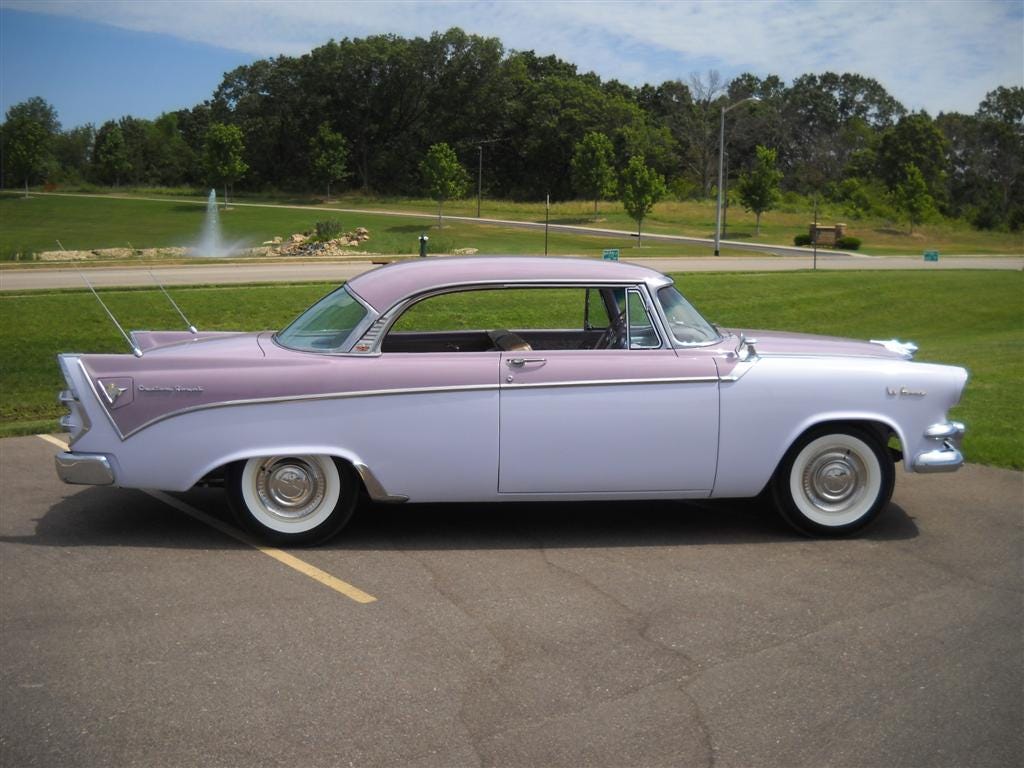
When Horace Elgin Dodge and John Francis Dodge founded the Dodge Brothers Company in 1900, they weren’t thinking about fast cars. In fact, Horace was busy patenting a dirt-resistant bicycle bearing in 1896. The following year, production began for the Evans & Dodge Bicycle Company.
Fortunately, in 1901, the mechanically-minded brothers shifted their focus to automobiles. The rest, as they say, is history. In 1903, they teamed up with newcomer Ford Motor Company to manufacture engines and transmissions. Then, in 1914, they introduced the very first Dodge vehicle. By 1915, Dodge was already the third best-selling automaker in America. From their humble beginnings in Niles, Michigan, the Dodge brothers left bicycles behind and established one of the most successful auto manufacturing companies in the country.
Although both brothers passed away in 1920, neither could have expected just how greatly Dodge’s legacy would outlive them. In 1928, their family sold the company to Chrysler, where it continues to thrive as its mid-priced brand. Despite its ongoing success, there are still plenty of little-known facts about Dodge’s history that you may not be aware of. Courtesy of Savage 61, here are five to get you started.
Mechanizing the War Effort
Back in 1916, Lieutenant George Patton Jr. took charge of the very first mechanized cavalry charge in the history of the U.S. Army. Patton commanded from a Dodge WC57 Command Car, and with just two additional Dodge vehicles and 15 soldiers, they went head-on against Pancho Villa and ultimately vanquished their lieutenants. As years went by, these mechanized cavalry charges became a primary tactic for the American military. (Their final horse-mounted cavalry charge went down in the Philippines in the early days of 1942.)
Engineered to Excel
Dodge has always been leading the charge in developing and putting to the test new, high-performance engines. It all started back in 1930 when Dodge rolled out its very first eight-cylinder engine – the same year they started offering factory-installed car radios. Unfortunately, due to the Great Depression, that engine was discontinued in 1934, but it was later brought back to life in 1952. Fast forward to 2014, and the Dodge Ram 1500 made history as the first compact pickup truck to offer a diesel engine option.
One For the Ladies
During the mid-1950s, Dodge introduced the Dodge La Femme, a full-sized car tailored exclusively for women. Recognizing the growing interest of women in automobiles at that time, Chrysler’s marketing department conceptualized the La Femme, aiming to seize a share of the women’s car market.
The La Femme’s interior truly embodied conventional feminine ideals of the 1950s. The 1955 models boasted pink rosebud upholstery against a delicate silver-pink backdrop. Each vehicle came with a stylish keystone-shaped purse made of soft pink calfskin, equipped with a variety of accessories. These accessories included a face-powder compact, cigarette case, lipstick case, and coin purse. Additionally, a special compartment behind the driver’s seat housed a matching raincoat, rain bonnet, and umbrella made from the same rosebud fabric.
Despite its… unique charm, the La Femme did not have much success in the market. Dodge discontinued the line in 1957 after only a pair of models were produced. Therefore, it’ll take some deep-diving on eBay if you want to drive around the streets of Reading in the most gaudy way possible this holiday season.
The Origin of the “Fratzog” Emblem
From 1962 to 1976, Dodge had a logo made up of three interlocking triangles. This funky geometric arrangement was known as a “Fratzog.” How did it get such a peculiar name? Well, back in the early 1960’s, one of Dodge’s designers needed a temporary title for the emblem and came up with the random word “Fratzog.” Simply put, no one else on the design team could come up with a better name, so the Fratzog moniker stuck and would continue appearing on steering wheel center hubs until the late 1970s.
Highs and Lows on the Racing Circuit
Dodge has been on both sides of racing glory and infamy. Lee Petty put Dodge on the racing map in 1953, when he became the first driver to earn a NASCAR victory for Dodge during a race in Palm Springs, Florida.
But in 1971, the Indianapolis 500 was marred by a crash involving the Dodge Challenger serving as the race’s pace car. Eldon Palmer, a local Indianapolis-area Dodge dealer, lost control of the Challenger at the race’s start. It proceeded to crash into a photographer’s stand, injuring 29 people.
Drive a Dodge Into Tomorrow
Here at Savage 61, we continue to champion Dodge’s present as we honor its past. Check out our full inventory of new and pre-owned Dodge vehicles today – or sell us your ride. From service to parts, Savage 61 has everything you need to keep you on the road in 2024, as you continue to write your own history.
5 Auto Tips That Will Make You Feel Like MacGyver
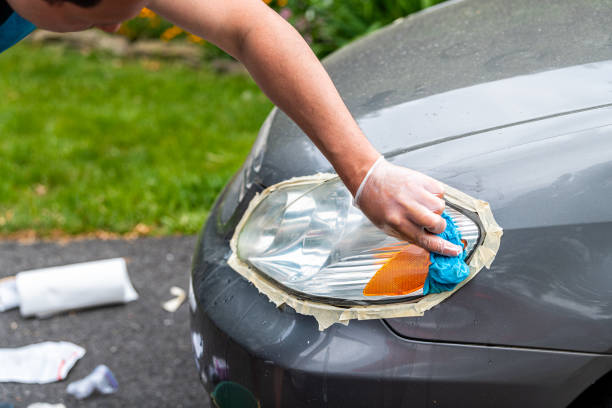
Car ownership can be a thrill, but it’s also a full-time responsibility. Issues can pile up if gone unchecked, making constant maintenance a must. And while you should be making regular service appointments with our service department at Savage 61, the health and lifespan of your vehicle can be extended further if you regularly perform smaller tasks on your own.
Thankfully, there are ways to routinely support your car from the comfort of your own home. Not only won’t you break the bank – everything you need can most likely be found in your kitchen and bathroom closets. Remember television’s MacGyver, who was always able to inventively use household items to get out of jams? Following these five tips won’t have you diffusing bombs with paper clips, but your car will thank you all the same.
The Best Way to De-Ice Your Windshield in the Morning? Vinegar.
Anyone who’s spent time in the Reading area knows how tedious starting your commute can be in the frosty early hours of a November day. Sometimes you’ll be greeted to an especially thick layer of frost or ice on your windshield, and the process of thawing it takes several minutes, leaving you uncomfortable and throwing off the start of your day.
You’d think pouring hot water on your windshield would provide a swift solution, but doing so harms your windshield’s health in the long run. Instead, try using a mixture of one cup lukewarm water and one cup white vinegar. The white vinegar cuts through dirt, oil, and other gunk, eliminating windshield haze. Be sure to clean both the exterior and inside of the windshield to prevent a gradual accumulation of foreign substances.
Toothpaste is an Effective Headlight Cleaner
It may seem strange, but it makes sense when you think about it. Just as brushing doesn’t damage the enamel of your teeth, toothpaste is abrasive enough to clean dirty or foggy areas from your headlights without damaging them. Depending on how bad the condition of your headlights is, a stronger option may be needed – but before you shell out for a processed chemical, try scrubbing it down with toothpaste, making sure to gently rinse it down with water and a rag afterwards. (Baking soda, a similarly abrasive material, could also do the job if you don’t have toothpaste handy. But, uh, you should probably have toothpaste handy).
Use Nail Polish to Prevent Cracks from Spreading
As we continue emptying out the bathroom cabinet, the next everyday-item-turned-tool on our list is nail polish. When your windshield takes any sort of minimal impact, the surface damage may not appear initially alarming. It’s disconcerting when your new Chrysler Pacifica takes a hit from a rock on the highway, but if it leaves only a minor blemish, crisis has surely been avoided, right? Unfortunately, minor chips and nicks can schism into long cracks that take over the entire surface of your windshield, leading to costly windshield repair.
Before those cracks can spread, simply apply nail polish to the cracked area. Nail polish acts as an adhesive that should keep the cracks contained – and if you’re able to find the right color, it can do so without causing any cosmetic change. (For this reason, nail polish also functions as a great scratch remover when your paint gets scratched. Just make sure to clean the area before applying.)
Use a Plunger to Remove Dents
Just like with tiny cracks and scratches, there’s no reason to book it to your local garage the moment minor dents materialize on your car. In fact, most small dents can be eliminated with less hassle than tending to a clogged toilet. Simply stick a plunger on the dented area, pull back, and watch as the plunger’s suction pulls the dented part of the panel back in place.
If you require further instructions, see this video, where these guys appear delightfully surprised by the outcome.
Dust the Interior with Coffee Filters
The lint-free material of coffee filters is ideal for wiping down your dashboard, infotainment console, and other areas of your car’s interior. The filters are inexpensive and are generally sold in bulk amounts, allowing you to be as thorough as possible. Lint, crumbs, and other materials gradually build up in your car’s interior; keeping a pack of coffee filters handy in your glove compartment can help combat this, regardless of whether you kick off your mornings with a cup of joe.
Mission Accomplished
There you have it – five easy, inexpensive ways to keep your car happy and healthy. If you’re short on any of the materials you’ll need, consider a trip to Reading’s Fairgrounds Farmers Market, an ideal destination during the holiday season.
And as always, we’re here at Savage 61 to help keep you on the road. When your maintenance job becomes too large to handle on your own, schedule a service appointment with Pennsylvania’s most awarded dealership.











